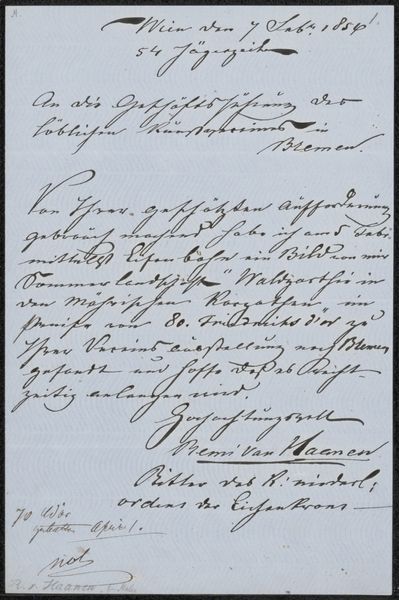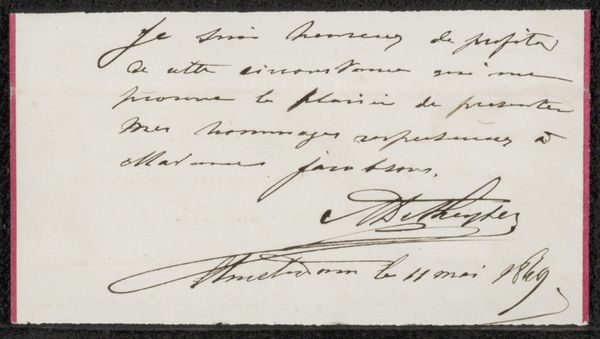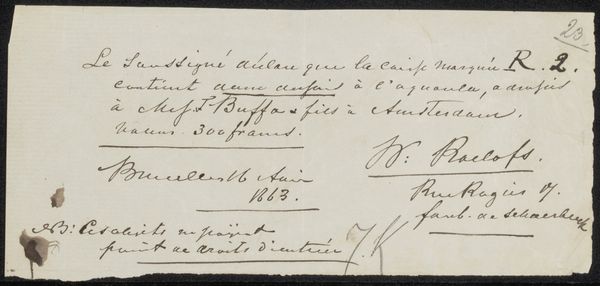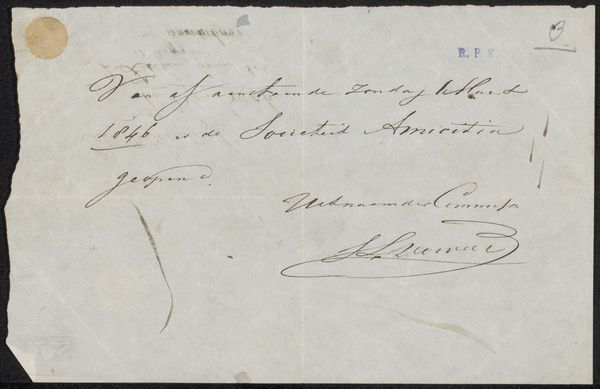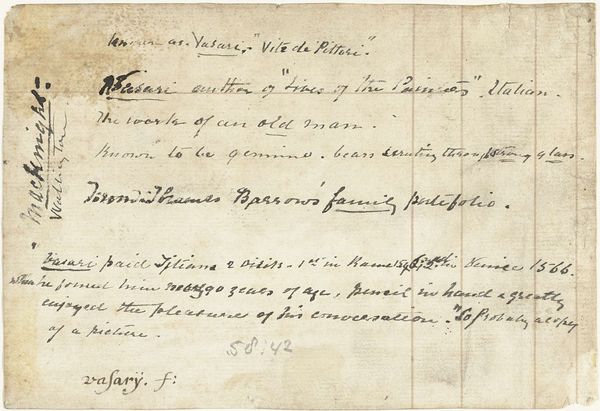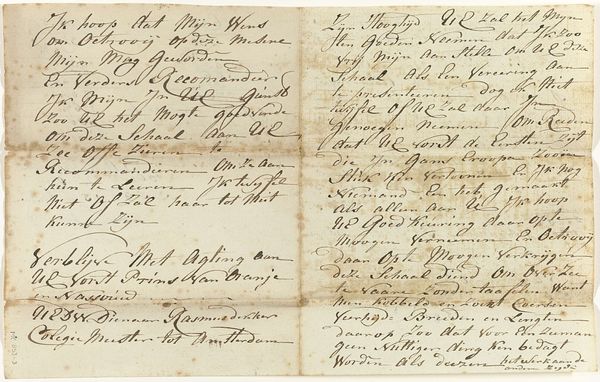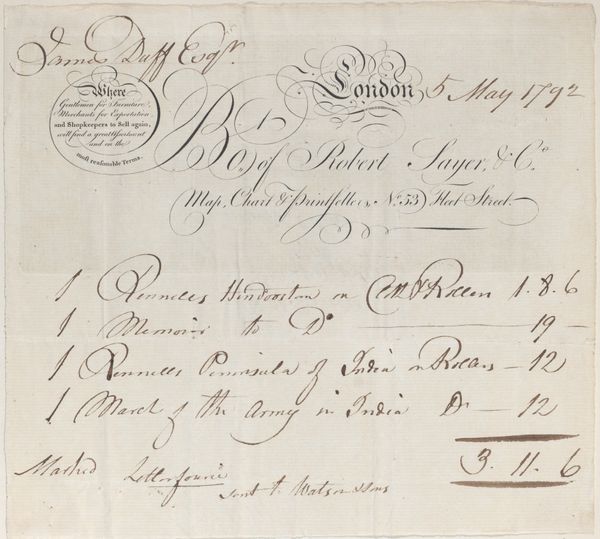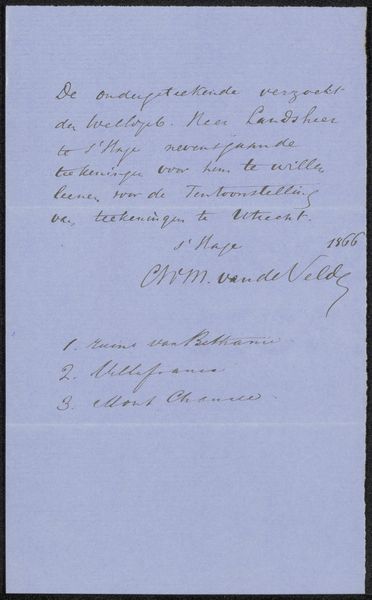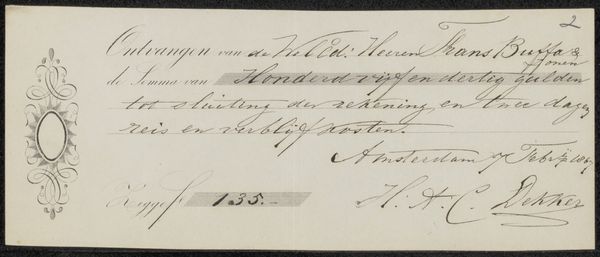
drawing
#
drawing
#
calligraphic
#
calligraphy
Dimensions: Dimensions unrecorded
Copyright: Public Domain
This bill of sale was produced in Philadelphia in 1809 by the celebrated woodcarver William Rush, and addressed to the Corporation of St. John's Church. It documents a payment for the carving of a large eagle and the making of a mould for iron work. Rush was a leading figure in the cultural life of Philadelphia and his sculptures often drew on patriotic themes. The eagle, a national symbol, reflected this sentiment. The bill of sale illustrates the complex interplay between art, commerce, and civic identity in the early American Republic. The church's commission highlights the role of religious institutions as patrons of the arts and active participants in the construction of national identity. The reference to iron work subtly reveals the industrializing economy. Examining documents like these is essential for art historians. They reveal the economic realities of artistic production and the institutional networks that support it. They also remind us that art is always embedded in specific social and political contexts.
Comments
No comments
Be the first to comment and join the conversation on the ultimate creative platform.
